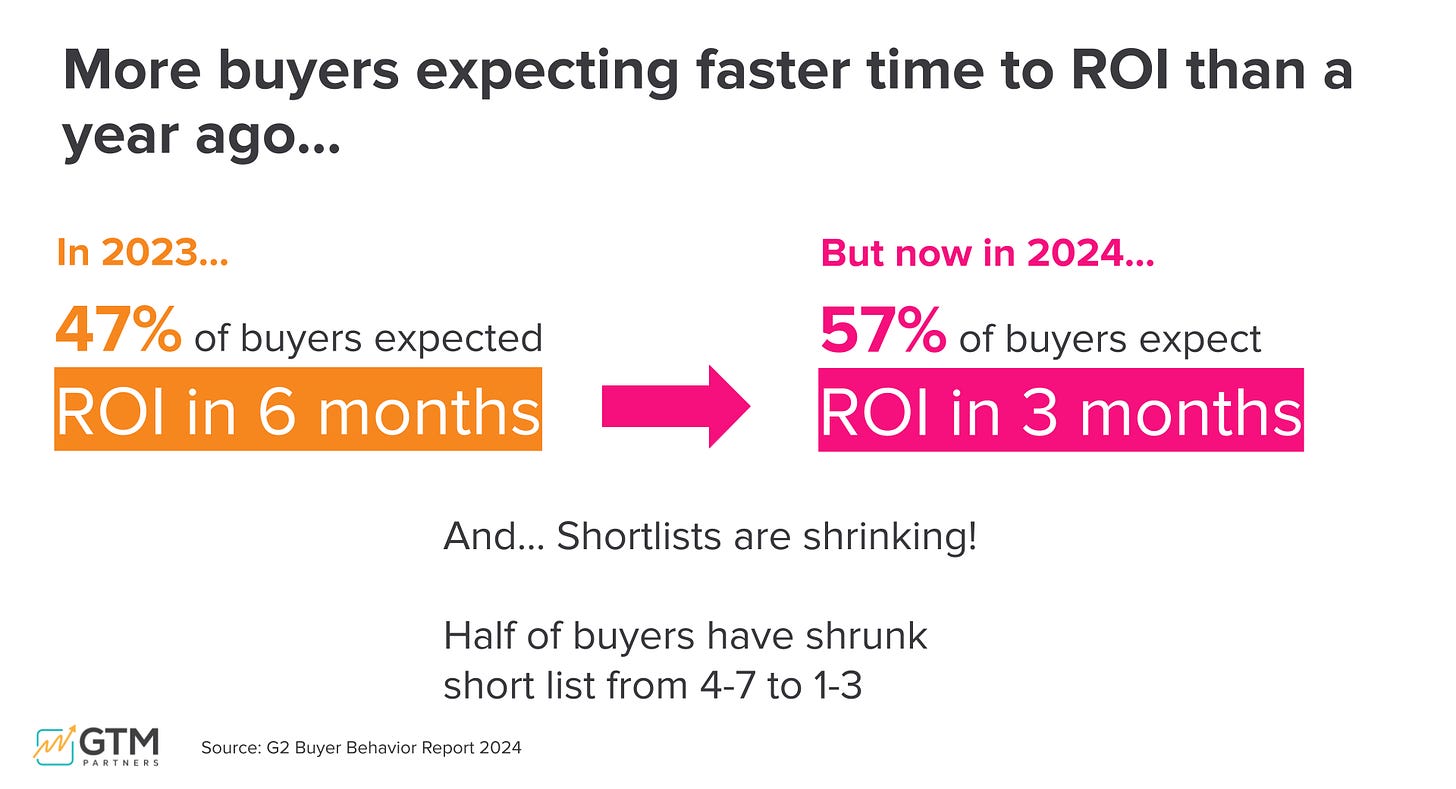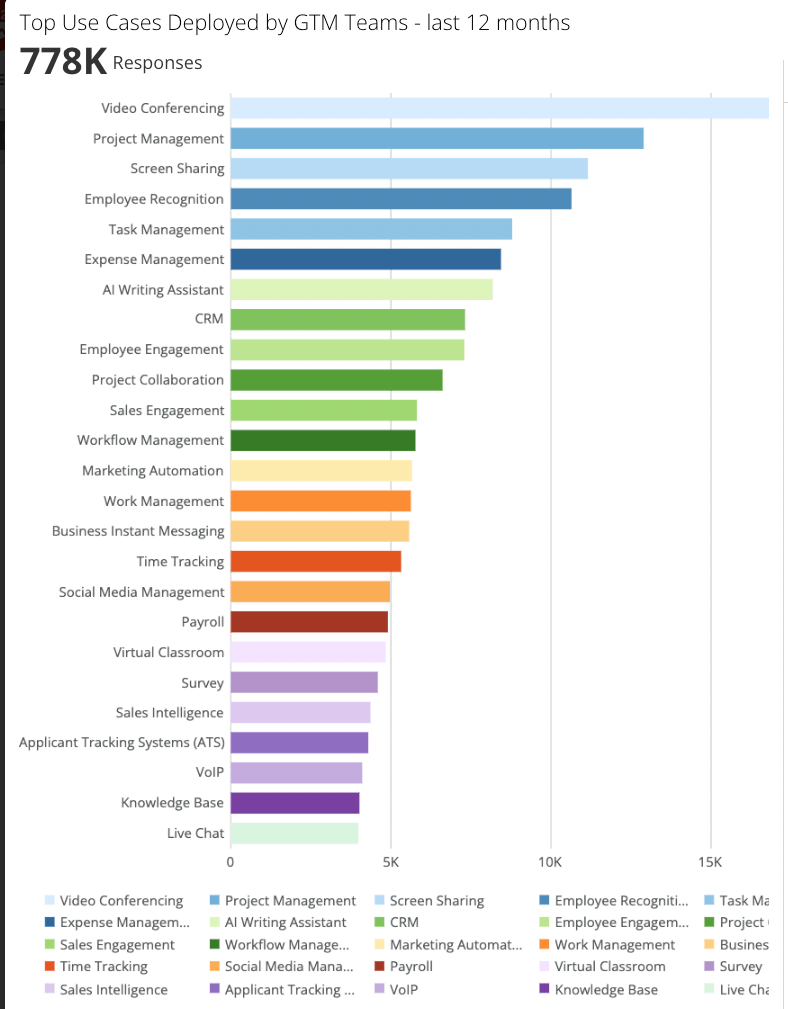Filters
Overcoming Growth Stalls: The 3P Framework to Keep Scaling Your Business
Thanks for being one of more than 100,000 forward-thinking GTM Leaders who subscribe to this weekly research note. We aim to be the go-to for go-to-market, so we appreciate you reading and sharing when you see something you like!
This week’s research note includes:
GTM Research: Using the 3 P Framework to Keep Scaling
GTM Made Simple Live: The Rise of the Chief GTM Officer
Better Together: Event Updates
GTM Events: Events coming soon!
GTM Research: The 3Ps of Go-To-Market: How to Navigate Shifts in Growth and Keep Scaling
A weekly deep-dive into new GTM research and insights
Building and scaling a business is never easy.
Whether you’re a $50 million company or a $5 billion enterprise, the complexity of operations, decision-making, and market dynamics can create significant barriers to growth.
It’s easy to hit growth stalls where everything suddenly becomes more challenging, and alarm bells go off as your rate of growth plummets.
In the bestselling book MOVE, our co-founders Sangram Vajre and Bryan Brown developed a framework to help businesses better navigate these moments of uncertainty.
It’s designed to guide strategic decisions like going upmarket, adopting a product-led growth model, expanding to new geographies, or even building a platform. This framework ensures that the go-to-market (GTM) strategy you implement aligns with your business stage, a key area where many companies get it wrong.
Understanding Growth Stalls: Why Do They Happen?
Growth is seldom a straight, upward trajectory. Companies often experience high growth early on, but at some point, that growth decelerates. Maybe you’ve been growing at 30%, 50%, or even 80%, and suddenly, you’re down to single digits.
Here are some possible reasons why:
Market Shifts: Competitors, new technologies, or an evolving industry landscape can make it harder to grow.
Internal Changes: Your company may have pivoted to a new Ideal Customer Profile (ICP) or added a new GTM motion, impacting growth.
Lack of Differentiation: Your product or offering may no longer stand out in the market.
Economic Downturns: The broader economy can exert pressure, making growth difficult to sustain.
The question then becomes, how do you keep this stall from becoming a complete breakdown?
The answer lies in transforming your go-to-market strategy at the right time in the right way.
The 3Ps Model: Strategic Decisions for Sustainable Growth
At the core of the MOVE framework is the 3Ps Model. The three stages are:
Problem Market Fit
Product Market Fit
Platform Market Fit
Each stage requires a unique GTM strategy, and understanding where you fall is essential to overcoming growth stalls.
1. Problem Market Fit: Identifying a Worthy Problem
In the Problem-Market Fit stage, the goal is to identify a problem that is big enough and worth solving.
Startups typically begin here, but even large businesses can find themselves back in this stage when market conditions shift or if they are launching a new product line.
Here's what you need to focus on:
Define the problem: Is it significant enough that customers are eager for a solution?
Ideal Solution: What can you do uniquely as a company to solve this problem?
Customer Focus: Who is your ideal customer? Which segment values your solution the most?
If you’re struggling in this stage, you’re likely still experimenting with different offerings, markets, and ICPs.
2. Product Market Fit: Selling a Single Solution to a Defined Audience
Once you’ve solved a key problem, you move to Product Market Fit. This is when you can sell a single product to a specific audience in a repeatable way. However, many companies struggle to transition smoothly out of Problem Market Fit. Here’s why:
Failure to Focus: Teams continue to operate as if they’re still in problem discovery mode, trying to sell too many things to too many audiences.
Scaling Missteps: Scaling too fast without narrowing focus leads to inefficiencies, misalignment, and downward pressure on growth.
To succeed in Product Market Fit:
Consistency is Key: Sell the same product, in the same way, to the same buyers.
Simplify Your Processes: Refine your GTM motions to avoid overwhelming your teams.
3. Platform Market Fit: Expanding Revenue Through Existing Customers
At Platform Market Fit, most of your growth comes from your existing customer base. By now, you’ve moved beyond a single product and are expanding your portfolio of offerings. Key characteristics include:
Multiple Products: You’re offering several products that bring added value to your existing customers.
Multiple GTM Motions: Inbound, outbound, partner-led, PLG, and more.
Wide Market Coverage: You’ve expanded upmarket, downmarket, and possibly into new geographies.
Aligning your GTM strategy with multiple product lines and diverse revenue streams is critical to achieving this stage.
Navigating Growth Stalls
No company is immune to growth stalls, but the best ones know how to pivot their GTM strategy quickly.
Here are some tips to prevent a complete crash:
Identify the Stall Early: The faster you recognize growth stalling, the quicker you can pivot.
Transform Your GTM: Don’t hesitate to shift your GTM model to adapt to new realities.
Focus on Your Business Stage: A one-size-fits-all approach doesn’t work. Tailor your GTM to where your business is—Problem, Product, or Platform Market Fit.
Do you need help with your GTM strategy and execution?
GTM Partners works with B2B companies in all three stages discussed above.
GTM Audit and Plan: We assess your current GTM challenges and opportunities, provide a GTM Score, and offer a plan for identifying and prioritizing your biggest GTM challenges.
Advisory: We work one-on-one or with your entire GTM team to execute your plan using our proprietary GTM Operating System and the frameworks we’ve built to accelerate your growth. We can do this on a project basis to address specific needs or help you through a total GTM transformation.
GTM Certification: We offer Go-to-Market certification for individuals, teams, and agencies using our proprietary GTM Operating System.
We’d love to chat more about your needs and how we can help.
GTM Made Simple Live!
Join our co-founder and CEO Sangram Vajre every Tuesday on LinkedIn at 12:30 ET for a deep dive into one of our research topics.
Join Sangram and Lindsay from GTM Partners on September 17th for a discussion based on last week’s research note on the Rise of the Chief GTM Officer.
GTM is Better Together: Updates!
“GTM is Better Together” is a revolutionary new vision that the future of GTM is better together with unified teams, tech, and trust. This is a weekly feature where we will share the latest announcements related to this important initiative.
We’re fresh off the heels of an amazing Boston show and will share insights in a future GTMonday.
Ensure all your colleagues in New York and San Francisco know we’re coming to town. Tickets are 2-for-1 or we can comp you if you work with one of our sponsors.
GTM Events
A list of upcoming events of interest to GTM professionals
September 18-20, Boston: INBOUND 2024
October 14-16, Austin, TX: Pavilion’s GTM 2024 (use code GTMPARTNERS20 for 20% off your ticket)
October 16, Austin: GTM Made Simple Roadshow
October 22, NYC: GTM is Better Together
November 20, San Francisco: GTM is Better Together
Hope you all have a great time at INBOUND and be sure to say hi to Sangram. He’ll be giving a talk on Wednesday, Sept. 18 from 1:30-2 p.m. on the Originals Stage with brand new benchmark research on the five mega trends that are transforming go-to-market.
Love,
The GTM Partners Team



